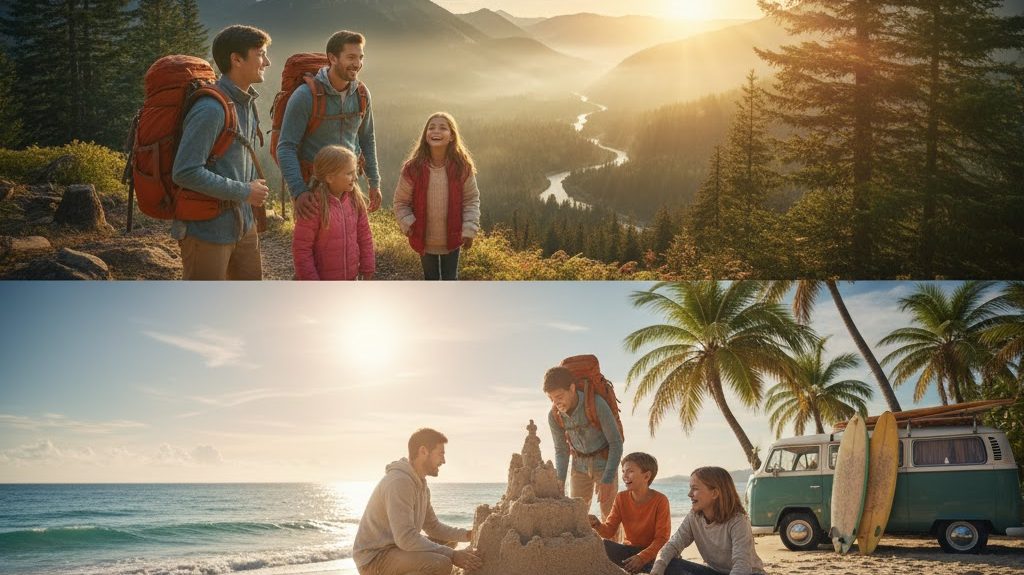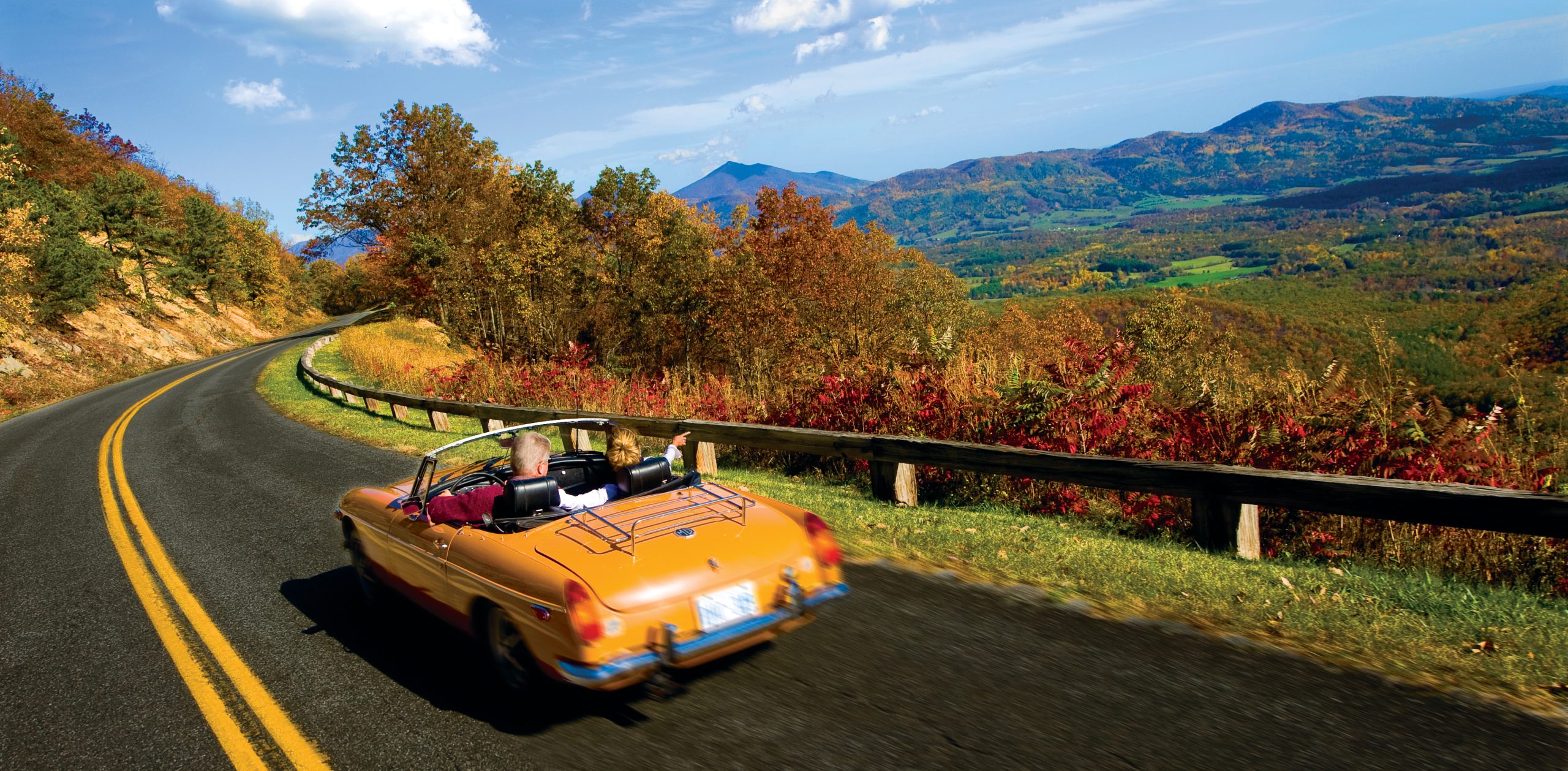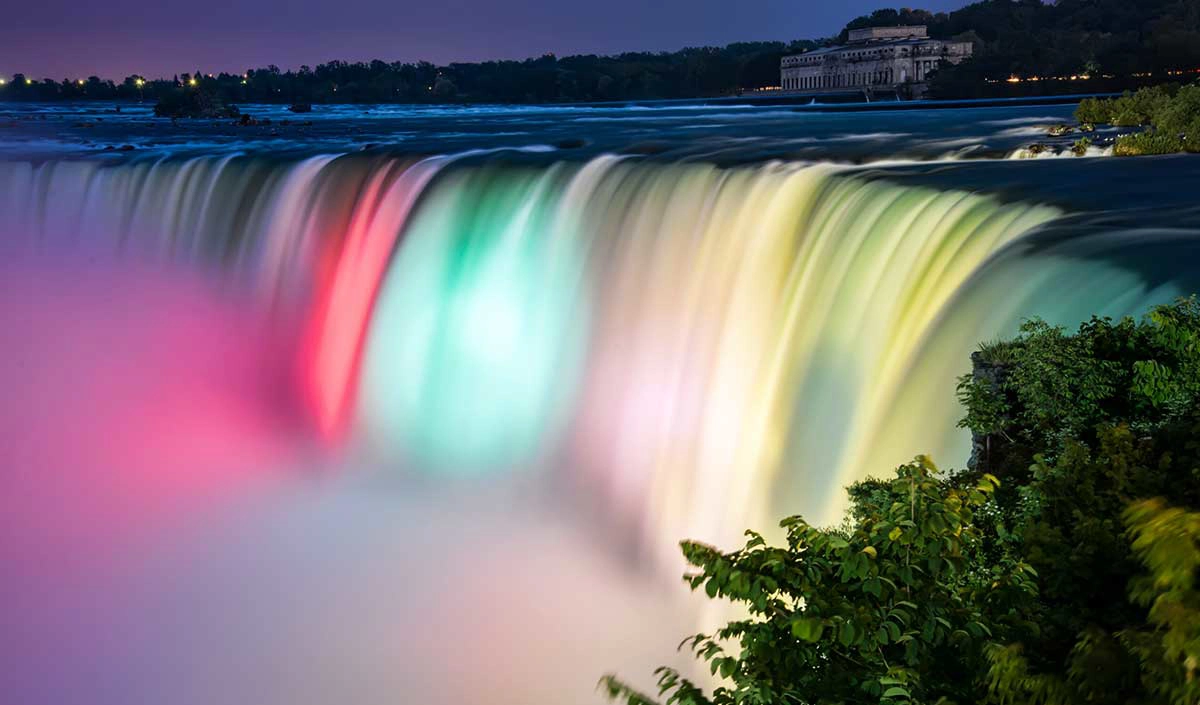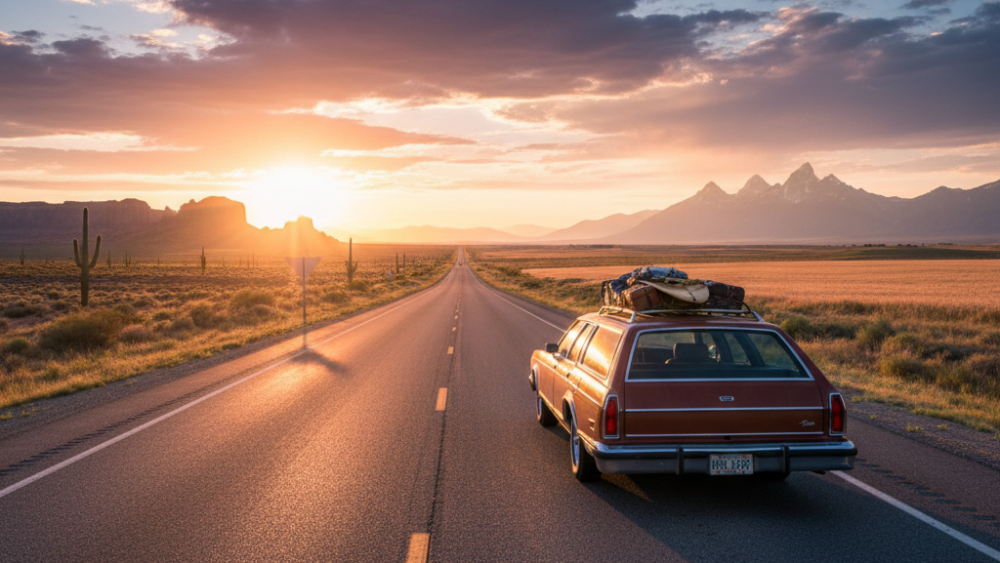Road trips are the ultimate family glue — a way to slow down, share small adventures, and make memories that stick. Whether your crew has toddlers, teens, picky eaters, or grandparents in tow, the United States offers a spectacular variety of family-friendly drives: coastal highways, mountain loops, national-park circuits, and charming historic routes. This long-form guide helps you pick the right route, plan logistics, and get the most out of family time on the road — with safety, fun, and learning in mind.
Why road trips are great for families — the research
Family travel does more than create photos — researchers have repeatedly found real benefits to family trips: improved family communication, greater well-being, shared memories, and even cognitive/academic benefits for children. Studies in tourism and child development show that family vacations support stronger family bonds, help kids learn new perspectives, and can positively affect academic skills like reading and math. These benefits make road trips an appealing investment of time and money. ScholarWorks+1
Practical takeaway: pick a route that balances novelty (new places and experiences) with comfort and predictability (reasonable drive times, frequent stops). That combination delivers the emotional and educational upsides that research highlights. ScholarWorks
How to choose the right family road trip
Not all road trips are equally family-friendly. Use this quick checklist to match a route to your family:
- Child ages: toddlers need shorter drives and more breaks; older kids and teens can handle longer legs.
- Interests: nature & animals, beaches, history, theme parks, food.
- Drive time per day: ≤3 hours for young kids; 4–6 hours OK for older kids.
- Season & weather: avoid monsoon/hurricane seasons; choose fall foliage or summer beach windows as appropriate.
- Budget & lodging style: camping vs hotels vs vacation rentals.
- Accessibility & health needs: medical facilities, mobility access, and dietary considerations.
If you want quick inspiration, skip ahead to the listicle section — it maps routes to family types and seasons.
Top family road trips in the U.S. — the list (with sample itineraries)
Below are 12 highly recommended family road trips across the U.S., selected for scenery, kid-friendly activities, safety, and logistics. Each entry includes ideal season, why kids will love it, and a sample 3–7 day itinerary.
1) Pacific Coast Highway — California coast (San Diego ↔ San Francisco / Northern extensions)
Best for: beach families, budding marine biologists, photographers
Ideal season: Spring–Fall (mild, sunny)
Why kids love it: beaches, tidepools, aquariums, easy scenic pull-overs. The PCH has many family stops (Monterey Aquarium, Big Sur beaches, Santa Barbara) and short driving segments between highlights. California Through My Lens+1
Sample 7-day plan: San Diego (SeaWorld/La Jolla) → Laguna Beach → Los Angeles (Santa Monica Pier) → Santa Barbara (zoo & beach) → San Luis Obispo → Big Sur (McWay Falls) → Monterey (aquarium) → San Francisco.
2) Blue Ridge Parkway & Great Smoky Mountains — Appalachia (Virginia → North Carolina → Tennessee)
Best for: families who love scenic mountain drives, easy hikes, fall foliage
Ideal season: Fall (colors), Spring (wildflowers)
Why kids love it: gentle scenic overlooks, short hikes to waterfalls, wildlife viewing, and historic farm sites. The Parkway is leisurely, with many picnicable pullouts.
Sample 5-day plan: Start in Asheville (Biltmore option) → drive Blue Ridge Parkway to Great Smoky Mountains (Clingmans Dome, Cades Cove) → Gatlinburg/Pigeon Forge (Dollywood for older kids).
3) Yellowstone–Grand Teton Loop — Wyoming/Montana/Idaho
Best for: wildlife safaris, geology lessons, older kids who can tolerate early mornings
Ideal season: Summer–Early Fall (roads open)
Why kids love it: geysers, hot springs, bison and elk sightings, junior ranger programs at national parks.
Sample 6-day plan: Jackson Hole → Grand Teton National Park (hikes & boat ride) → Yellowstone (Old Faithful, Grand Prismatic Spring) → West Yellowstone (museum & river activities).
4) Florida Keys / Overseas Highway — Miami → Key West
Best for: families who want beach time + short driving days
Ideal season: Winter–Spring (drier, less hurricane risk)
Why kids love it: snorkelable reefs, glass-bottom boat tours, shallow beaches and sunset celebrations at Mallory Square.
Sample 4-day plan: Miami base → Key Largo (snorkeling) → Islamorada (marine life attractions) → Marathon (Turtle Hospital) → Key West (Hemingway home, sunset).
5) Route 66 Highlights — Chicago → St. Louis → Oklahoma City → Albuquerque → Flagstaff → Santa Monica
Best for: families who like Americana, quirky roadside stops, short legs in towns
Ideal season: Spring–Fall (avoid winter mountain passes)
Why kids love it: retro diners, kitschy museums, small-town charm, and accessible museums.
Sample 7-day plan: Pick a section (e.g., Amarillo→Albuquerque→Flagstaff) and combine natural sites (Palo Duro Canyon, Petrified Forest) with museums and diner stops.
6) New England Coast & Fall Foliage — Boston → Cape Cod → Newport → Mystic → Portland (ME)
Best for: families who love history, lighthouses and autumn color
Ideal season: Mid-September–October (peak foliage varies by latitude)
Why kids love it: beaches, whaling museums, aquarium visits, and pumpkin-patch activities in fall.
Sample 5-day plan: Boston → Salem (history) → Cape Cod (beaches & mini-golf) → Newport (mansions) → Portland (lighthouses & old port).
7) The Southwest National Park Loop (Grand Canyon → Sedona → Page/Antelope Canyon → Zion → Bryce)
Best for: families who want dramatic desert landscapes and starry skies
Ideal season: Spring & Fall (comfortable temps)
Why kids love it: colorful slot canyons, wildlife, stargazing, and short, memorable hikes.
Sample 7-day plan: Flagstaff → Grand Canyon → Sedona → Page (Antelope Canyon & Horseshoe Bend) → Zion → Bryce Canyon → return.
8) Pacific Northwest: Olympic Peninsula & Olympic National Park (Seattle loop)
Best for: nature-loving families, tidepools and rainforest experiences
Ideal season: Summer (drier)
Why kids love it: beaches with tidepools, temperate rainforests, Hurricane Ridge vistas and accessible trails.
Sample 5-day plan: Seattle → Bainbridge Island → Olympic Peninsula (Hoh Rainforest, Rialto Beach) → Port Angeles → back to Seattle.
9) Upper Midwest: Lake Michigan Circle Tour (Chicago → Milwaukee → Door County → Ludington → Sleeping Bear Dunes)
Best for: beach/lake lovers, family cycling and small-town charm
Ideal season: Summer (warm swimming)
Why kids love it: sugar sand beaches, dunes to climb, family-friendly state parks and ferries.
10) Great Smoky Mountains & Cherokee (Tennessee/North Carolina loop)
Best for: short-drive families in the southeastern U.S.
Ideal season: Fall or Spring
Why kids love it: wildlife viewing, historic buildings, kid-friendly hikes, and artisan communities.
11) Hawaii (Island Road Trips) — Big Island, Maui, Oʻahu drives
Best for: families who combine flight + rental car for island exploration
Ideal season: Year-round (watch wet seasons)
Why kids love it: volcanoes, snorkeling lagoons, cultural activities and short driving days between diverse landscapes.
12) National Park “Grand Circle” for Families — Utah (Arches, Canyonlands, Capitol Reef, Bryce, Zion)
Best for: families who love geology and adventure
Ideal season: Spring & Fall
Why kids love it: otherworldly rock formations, short hikes to arches and viewpoints, junior ranger programs.
Table — family trip comparison at a glance
| Route | Approx. Best Duration | Drive Difficulty | Best for Ages | Top Kid Activities |
|---|---|---|---|---|
| Pacific Coast Highway | 5–10 days | Easy–Moderate | All ages | Beaches, aquariums, tidepools |
| Blue Ridge Pkwy + Smokies | 4–7 days | Easy | All ages | Easy hikes, waterfalls, historic sites |
| Yellowstone–Grand Teton | 5–7 days | Moderate (longer days) | 6+ | Geysers, wildlife viewing, ranger programs |
| Florida Keys | 3–5 days | Easy | All ages | Snorkeling, shallow beaches, turtle rescue |
| Route 66 (section) | 3–7 days | Easy | 6+ | Diner stops, quirky museums |
| New England Fall | 4–7 days | Easy | All ages | Lighthouses, leaf peeping, aquariums |
| Southwest National Parks | 7–10 days | Moderate | 8+ | Canyons, stargazing, short hikes |
Family planning tips & logistics — make it smooth
- Keep daily drive time reasonable. Aim for 2–3 hours on average with a hard cap of 5 hours for older kids.
- Pack an “activity bag” per child: small toys, travel games, sketchpads, headphones and a tablet with preloaded movies.
- Rotate DJs & navigators. Let older kids pick playlists or be co-pilots — it creates buy-in and reduces back-seat conflict.
- Schedule frequent leg-stretch stops. Plan parks or playground stops every 1.5–2 hours.
- Book family-friendly lodging in advance. Family suites, kitchenettes, and pools make a big difference.
- Bring flexible food options. Snacks, refillable water bottles, and a cooler for picnic lunches save money and mood swings.
- Build in “free” time. Don’t overschedule — unstructured discovery is often the most memorable.
- Health & safety: carry a first-aid kit, copies of prescriptions, and download offline maps.
- Involve kids in planning. Give them small research tasks (pick a roadside stop, find a local snack). It transforms them into active participants.
- Balance screen time with “trip tasks.” Offer incentives for participating in scavenger hunts, journaling, or spotting wildlife.
Educational value: learning on the road
Family road trips are prime experiential classrooms. Research shows that travel supports family communication, personal growth, and even academic skills. Programs like the National Park Service Junior Ranger provide structured learning for kids, while simple activities — map reading, budgeting for gas/food, observing ecosystems — translate into real-world skills. Studies point to measurable benefits in family well-being and children’s learning from travel experiences. ScholarWorks+1
Practical classroom ideas: keep a travel journal, do simple science (identify local flora/fauna), or assign a “photo essay” project where kids capture a day’s story in pictures.
Budgeting your family road trip
- Fuel: long drives are the biggest variable; estimate miles × MPG × fuel price.
- Lodging: campsites are cheapest, motels midrange, family resorts pricier; split stays between splurge & budget nights.
- Food: grocery picnics save money; allow for a few special meals.
- Activities: factor national park entrance fees, aquarium or museum tickets, and tour costs.
- Emergency fund: always set aside ~10–15% extra for unexpected repairs or weather delays.
Tip: many national parks accept the America the Beautiful annual pass — valuable if hitting multiple parks.
Packing checklist for families (printable)
- Travel documents & IDs
- First-aid kit & medications
- Chargers, power bank, car adapters
- Reusable water bottles & snacks
- Wet wipes, sanitiser, extra masks (if preferred)
- Lightweight blankets & pillows
- Kid activity bags & headphones
- Cooler & picnic set
- Basic tool kit & jumper cables
- Printed maps and reservation confirmations
Safety & accessibility considerations
- Car seats & boosters: confirm legal requirements for every state en route.
- Weather prep: monitor forecasts and have alternate plans (flooding on coastal routes, snow in mountain passes).
- Medical access: note urgent care locations along your route.
- Accessibility: research ADA-friendly trails and accommodations when traveling with mobility needs.
FAQs — common family road trip questions
Q: How long can kids comfortably sit in a car?
A: Younger kids do best with 1–2 hour stretches between active breaks; older kids can tolerate longer legs (3–4 hours) with stops.
Q: What’s the best age for a cross-country road trip?
A: Families often find ages 5–12 are sweet spots — kids remember the trip and can be engaged with activities. Teens are great co-pilots but may prefer different attractions. Research shows trips benefit children across ages, with activities tailored appropriately. ScholarWorks
Q: Is camping with young kids a good idea?
A: Yes — if you’re prepared (warm bedding, easy food, bug protection). Start with car-camping near amenities.
Q: Are national parks good for toddlers?
A: Absolutely — many parks have short, stroller-friendly trails and family programs (check Junior Ranger offerings).
Q: How do I keep budget under control?
A: Picnic lunches, motels/midrange hotels, off-season travel and attractions’ combo passes help a lot.
Q: What if the weather ruins part of the trip?
A: Have flexible plans: swap an outdoor day for museums, aquariums, indoor play centers, or a scenic driving day.
Q: How to handle motion sickness?
A: Sit kids in front seats if possible (safely), use acupressure wristbands, avoid heavy meals before driving, and have ginger candies or recommended meds on hand.



